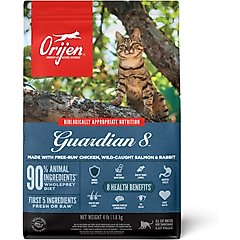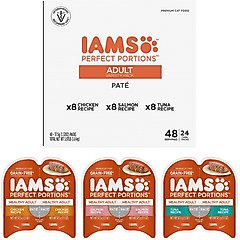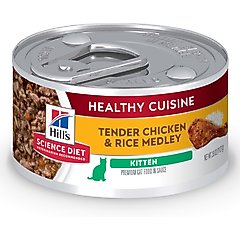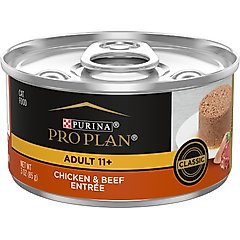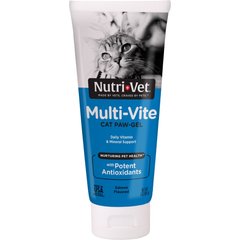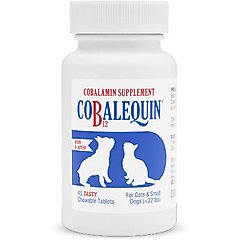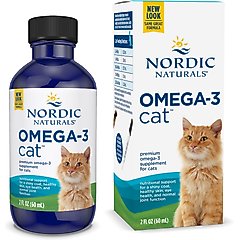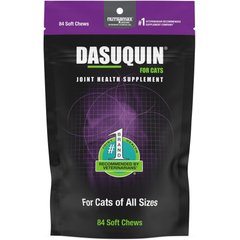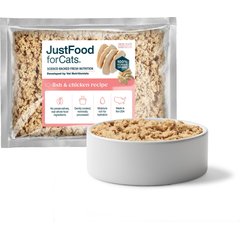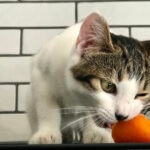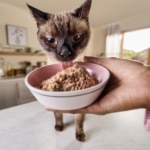Cat Nutrition: What Is Complete and Balanced Cat Food?
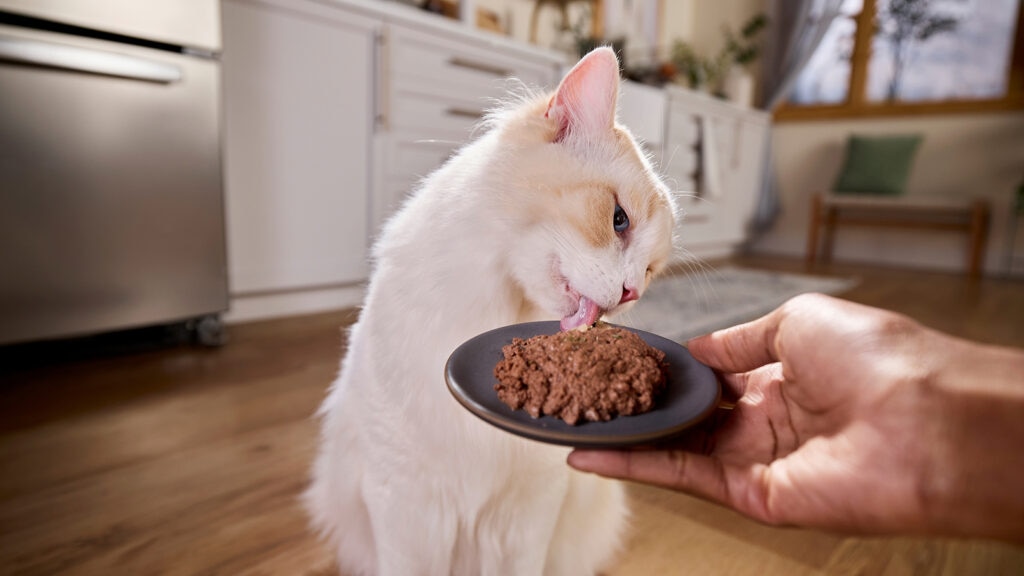
Photo by Chewy
Good nutrition is vital to a cat’s well-being. The food they eat affects everything from their health and energy levels to their overall quality of life. To help your feline thrive, their diet needs to include the right mix of nutrients in the correct proportions.
But with so many options available, choosing the best cat food can feel overwhelming. Learning what makes cat food “complete and balanced” will help you make the best choice for your pet.
Key Takeaways
- Cats need six essential nutrients for overall health: protein, fat, carbs, vitamins, minerals, and water.
- Complete and balanced cat food meets AAFCO standards and supports cats at a specific life stage.
- Nutrient imbalances can lead to issues like obesity, diabetes, or heart disease.
What Should a Cat‘s Diet Consist Of?
The Association of American Feed Control Officials (AAFCO), a nonprofit organization that sets nutritional standards for pet food and animal feed in the United States, states that a cat’s diet must include six essential nutrient categories, each playing a vital role in your cat’s health:
- Protein: This is the foundation of cat nutrition. Cats are obligate carnivores, meaning they require a diet high in animal-based protein. Compared to many other animals, cats need significantly more protein to support their muscles, immune system, skin and coat health, and overall energy levels. Their diet must also include 11 essential amino acids—nutrients their body can’t product on its own—including taurine, which is vital for heart function and vision.
- Fat: Fat provides the most concentrated energy source in your cat’s diet. Essential fatty acids, particularly omega-3 and omega-6 fatty acids, support skin and coat health, help wounds heal, and help regulate inflammation. Fats are also needed to transport fat-soluble vitamins throughout the body.
- Carbohydrates: Carbs ideally play a lesser role in cat nutrition. While cats can digest carbs for energy, most of a cat’s calories should come from proteins and fats.
- Vitamins: Vitamins are organic (carbon-containing) compounds that are required in small amounts for normal metabolism. Key vitamins include vitamin A for vision, vitamin D for bone health, vitamin E as an antioxidant, and B-complex vitamins to convert food into energy.
- Minerals: Minerals are inorganic compounds (meaning they don’t contain carbon) and are essential for body structure and function. Important minerals include calcium and phosphorus in bones, potassium for nerve function, and iron for oxygen transport.
- Water: Water is a crucial but often overlooked nutrient. Cats naturally obtain most of their water from food rather than drinking bowls, making wet cat food an excellent choice for proper hydration.
Cats need the right balance of all six of these nutrients—not too little, but not too much. To make things more complex, their nutritional needs also shift as they move through different life stages.
For example, the AAFCO minimums for protein (on a dry-matter basis) are 30% for kittens to support their growth and development but only 26% for adult cats. Senior cats don’t always have significantly different nutritional needs than adults, but they may benefit from diets made with highly digestible proteins.
What Is Complete and Balanced Cat Food?
To be considered complete and balanced, a cat diet must contain all the essential nutrients in the correct proportions to meet a cat’s needs for their specific life stage (growth and reproduction versus adult maintenance, for example).
Complete and balanced cat foods will display an AAFCO statement of nutritional adequacy on the label. According to the FDA, the food must either:
- meet one of the Cat Food Nutrient Profiles established by the AAFCO, or
- pass a feeding trial using AAFCO procedures.
Feeding a complete and balanced cat food is crucial because nutritional deficiencies or excesses can lead to serious health problems like obesity, diabetes mellitus, and heart disease.
What Cat Foods Are Considered Complete and Balanced?
Thankfully, many reputable pet food companies meet and even exceed AAFCO standards for complete and balanced cat food nutrition. Major manufacturers produce high-quality cat foods that undergo rigorous testing to ensure they are safe and nutritious.
When choosing cat foods, consider these vet-recommended options:
- Best dry cat food: Look for foods—like ORIJEN Guardian 8 Free Run Chicken, Wild Caught Salmon & Rabbit Adult Grain-Free Dry Cat Food—that have high-quality protein sources as the first ingredient and minimal carbohydrates. But remember that most dry cat foods contain more carbohydrates than wet foods.
Recommended Product
- Best wet cat food: Canned cat foods generally provide better hydration and lower carbohydrate content, making them an excellent choice for most cats. Many good options are available, including Iams Perfect Portions Healthy Adult Variety Pack Pate Grain-Free Wet Cat Food.
Recommended Product
- Best cat food for kittens: Good kitten formulas, like Hill’s Science Diet Kitten Healthy Cuisine Tender Chicken & Rice Medley Wet Cat Food, contain higher protein and calorie content than comparable adult foods, in order to support rapid kittens’ growth and development.
Recommended Product
- Best cat food for senior cats: Purina Pro Plan Focus Adult 11+ Classic Chicken & Beef Entree Canned Cat Food and other senior formulas often include easily digestible proteins and other nutrients that support the health of older cats.
Recommended Product
Use these guidelines as a starting point but consult with your veterinarian too. They can recommend the best cat foods based on your cat’s individual needs, health status, and life stage.
Your vet can also guide you through the process of switching foods safely to avoid digestive upset and give you an idea of how much to feed your cat to keep them at an optimal weight.
Do Cats Need Supplements?
Most cats eating complete and balanced cat food don’t require additional supplements. However, veterinarians may recommend specific supplements in certain situations, such as:
Vitamin and Mineral Supplements
Vitamin and mineral supplements, like the Nutri-Vet Multi-Vite Multivitamin, aren‘t usually needed if a healthy cat is already eating a complete and balanced cat food. However, vitamins or minerals can be part of treating certain health problems.
Recommended Product
For example, a cat recovering from inflammatory bowel disease may benefit from a cobalamin supplement (vitamin B12), like Nutramax Cobalequin Tablets.
Recommended Product
Omega-3 Fatty Acid Supplements
Omega-3 fatty acid supplements, like Nordic Naturals Omega-3, support skin and coat health, particularly in cats with allergies or other skin conditions.
Recommended Product
Probiotics
Probiotics, like Purina Pro Plan FortiFlora, may help cats with digestive issues or those recovering from antibiotic treatment.
Recommended Product
Joint–Support Supplements
Joint–support supplements containing glucosamine, like Nutramax Dasuquin, may benefit senior cats or those with arthritis.
Recommended Product
Always consult your veterinarian before adding any supplements to your cat’s diet.
Remember that supplements complement, but do not replace, a balanced diet. The foundation of good cat nutrition should always be a high-quality, complete and balanced cat food appropriate for your cat’s life stage.
FAQs About Cat Nutrition
What is the 25% rule for cat food?
The 25% rule states that if words like “dinner,” “entrée,” or “platter” (e.g., “chicken dinner”) are used to describe a cat food, the named ingredient must make up at least 25% of the product’s weight, excluding water used for processing. This helps pet parents understand the proportion of key ingredients in the food.
What is the most common nutritional deficiency in cats?
Taurine deficiency was common in the past but now rarely occurs if a cat is eating complete and balanced cat food.
Today, a lack of water in the diet combined with low protein levels may be the most common nutritional deficiencies facing cats. Many veterinarians recommend wet cat foods because of their high water and protein content.
Can I make my own cat food?
While homemade cat food can be a good choice in certain circumstances, it requires a lot of knowledge and careful planning to ensure that the food provides complete and balanced nutrition. Most of the recipes online or in books are inadequate.
If you’re interested in feeding homemade cat food, consult a veterinary nutritionist or use services like PetDiets.com or Balance.it to create nutritionally complete recipes. Fresh cat foods, like JustFoodForCats, are another good option.
Recommended Product
Do cats need high-protein cat food?
A high-protein diet is a good option for most cats. AAFCO requires a minimum 26% crude protein for adult maintenance and 30% for growth and reproduction, but some cats could benefit from even higher protein levels.
Research suggests that cats naturally seek out a diet that provides about half their calories from protein.
